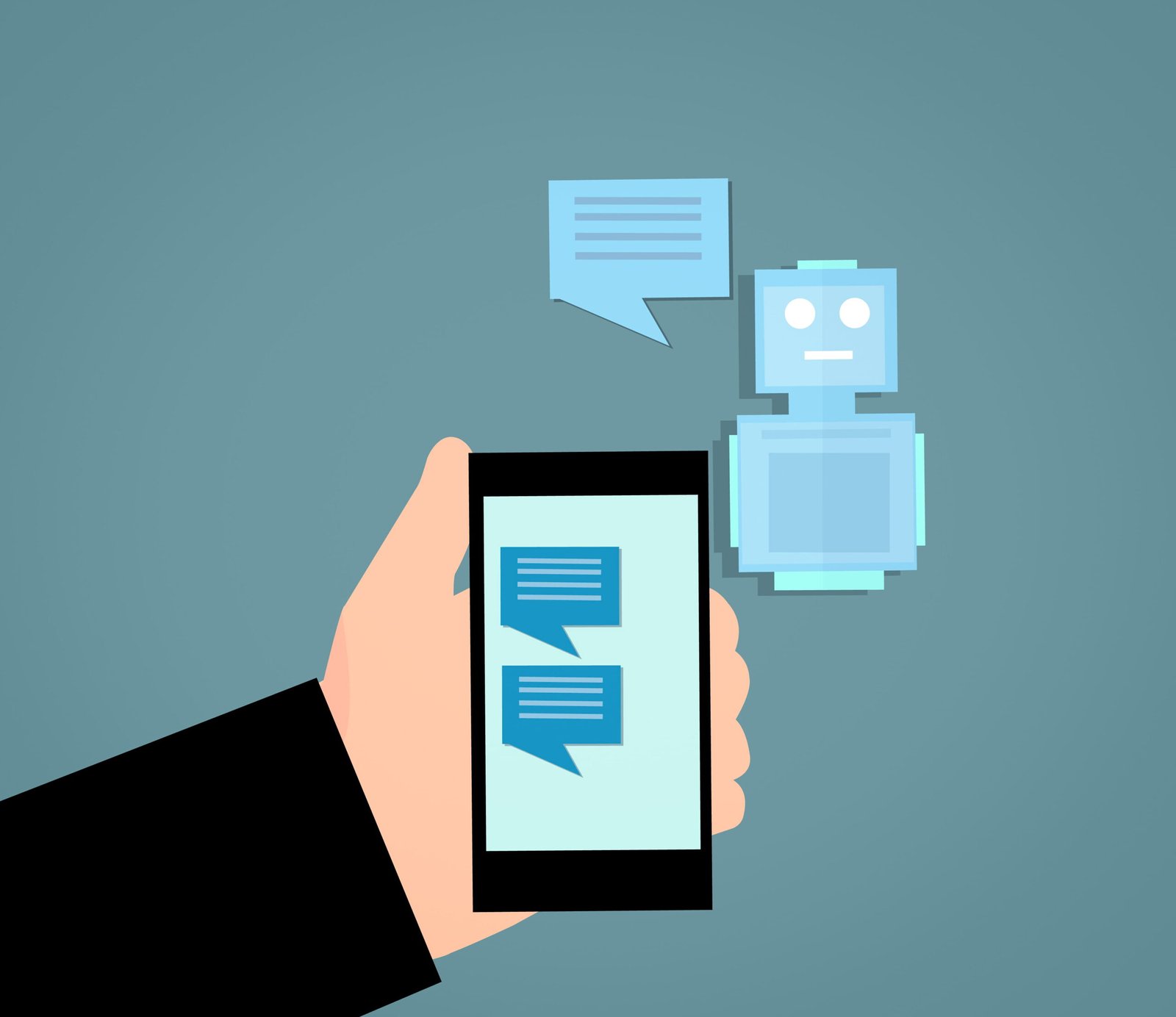It’s almost unbelievable to think that the same kind of technology that once shocked the world by beating chess grandmasters now quietly powers the digital helpers in our pockets. Imagine, for a moment, the tension in the air when IBM’s Deep Blue stunned Garry Kasparov in 1997. The world watched, jaws dropped, as a computer outsmarted a human in a game that had long symbolized human intellect. Fast forward to today, and artificial intelligence is everywhere — answering our questions, suggesting songs, diagnosing diseases, and even helping us find the best route home. The journey from chessboards to chatbots is a gripping story of human ambition, curiosity, and sometimes even fear. It’s about how machines that once played games for fun have become woven into the fabric of daily life, shaping the way we live, learn, and connect.
The Birth of Artificial Intelligence: A Dream Takes Shape

Artificial intelligence began as a wild idea—what if machines could think? Back in the 1950s, scientists and mathematicians started wondering if human reasoning could be replicated inside a computer. Alan Turing, a brilliant British mathematician, asked the question, “Can machines think?” and proposed a test, now known as the Turing Test, to see if computers could imitate human conversation convincingly. Early AI programs could solve basic math or play simple games, but these early efforts were clunky and limited. Yet, the dream was alive, fueling decades of research and sparking the imaginations of innovators everywhere. This was the start of a journey that would one day touch every corner of our lives.
Chess: The Ultimate Proving Ground for Machine Intelligence

For years, chess was considered the ultimate test for AI. The game’s complexity—its nearly infinite number of possible moves—made it a daunting challenge for any computer. In the 1980s and 1990s, teams of scientists worked tirelessly to build machines that could hold their own against skilled human players. The world was captivated when IBM’s Deep Blue faced off against Garry Kasparov, the reigning world chess champion. After a tense series of matches, Deep Blue clinched victory, sending shockwaves through the global community. Many saw this as a turning point—a machine had outsmarted a human at a game that required strategy, intuition, and foresight. This dramatic moment marked the beginning of AI’s move from research labs into the real world.
Beyond Board Games: The Rise of Machine Learning
Chess was just the beginning. Scientists realized that if machines could learn patterns and strategies in games, they might also learn from real-world data. This idea led to the development of machine learning, where computers are trained on massive amounts of data to recognize patterns and make predictions. Suddenly, AI wasn’t just about following programmed instructions—it was about learning, adapting, and even improving over time. Machine learning opened doors to new possibilities, from recognizing faces in photographs to predicting weather patterns and even spotting signs of disease in medical scans. The power of learning from data became the secret ingredient that pushed AI far beyond games.
Voice Assistants: AI Finds a Voice in Our Homes
Who could have guessed that one day we’d talk to our phones, and they’d talk back? The arrival of voice assistants like Siri, Alexa, and Google Assistant brought AI into our living rooms, kitchens, and cars. These digital companions use advanced language processing to understand what we say and respond with surprising accuracy and personality. Instead of tapping buttons or typing, we simply ask for the weather, play our favorite song, or set a reminder with a few spoken words. The technology behind these assistants is a blend of speech recognition, machine learning, and vast databases of information. Now, AI isn’t just something you read about in science magazines—it’s a helpful friend that lives in your pocket and listens when you call.
Recommendation Engines: Personalizing Everyday Choices

Have you ever wondered how Netflix seems to know what movie you’ll like next, or how Amazon seems to read your mind with its suggestions? That’s the magic of AI-powered recommendation engines. These systems analyze your choices, browsing habits, and even the time you spend on each page to guess what you might want next. By sifting through mountains of data, they personalize your experience, making it easier to find things you’ll love. For many, these subtle suggestions save time and bring delight, but they also spark questions about privacy and how much AI knows about us. Either way, recommendation engines quietly shape what we watch, buy, and listen to, making everyday decisions a little bit easier.
Chatbots: AI that Talks, Listens, and Learns

Chatbots are the modern descendants of those early chess-playing machines, but instead of moving pieces on a board, they hold conversations with us. From customer support on websites to personal finance apps, chatbots now handle millions of queries every day. They can help you book a flight, check your bank balance, or even lend a sympathetic ear when you’re feeling down. The magic lies in natural language processing—AI’s ability to understand and generate human language. These virtual agents are becoming more lifelike, learning from each interaction to better understand what people need. While some miss the days of talking to a real human, others marvel at how helpful and efficient chatbots have become.
Healthcare: AI’s Life-Saving Potential
AI’s leap into healthcare is nothing short of awe-inspiring. Imagine a computer that can spot tumors in medical images faster than the best doctors, or an algorithm that predicts a patient’s risk of disease based on their medical history. In hospitals around the world, AI is helping doctors diagnose illnesses, recommend treatments, and even monitor patients in real time. This technology doesn’t replace human caregivers, but it acts as a powerful partner, catching details that might be missed and freeing up time for more personal care. In a world where every second counts, AI’s ability to process vast amounts of data is saving lives and bringing new hope to patients and families.
Transportation: Smarter Roads, Safer Journeys
The dream of self-driving cars once seemed like pure science fiction, but AI is making it a reality. Today’s vehicles are packed with sensors and computers that can navigate city streets, avoid obstacles, and even park themselves. AI systems process information from cameras, radar, and GPS to make split-second decisions, keeping passengers safe and traffic flowing smoothly. Even if you’re not riding in a driverless car, AI is working behind the scenes—optimizing traffic lights, helping logistics companies plan routes, and making public transit more reliable. Transportation is being transformed before our eyes, promising a future where roads are safer and travel is more convenient for everyone.
Education: Personalized Learning with AI
Classrooms are changing thanks to AI. Imagine a learning platform that adapts to your strengths and weaknesses, giving you extra help where you need it most. AI-powered educational tools can analyze how students interact with lessons, identify topics they struggle with, and suggest personalized exercises. Teachers use these insights to tailor their instruction and help each child succeed. For students with disabilities, AI can provide customized support, like reading text aloud or translating materials into different languages. The goal isn’t to replace teachers, but to empower them with new tools—making learning more engaging, effective, and inclusive for everyone.
Environmental Conservation: AI for a Greener Planet
AI isn’t just about convenience or entertainment—it’s playing a surprising role in protecting the planet. Conservationists use AI to track endangered animals, analyze satellite images of forests, and predict the impact of climate change. By processing massive amounts of data, AI helps scientists spot patterns and make faster, smarter decisions. For example, AI can identify illegal logging in remote rainforests or predict where poachers might strike next. In agriculture, AI systems monitor crops and soil health, helping farmers grow more food with fewer resources. With each breakthrough, AI is proving to be a powerful ally in the fight to preserve Earth’s precious ecosystems.
Ethical Challenges: Navigating the Risks of AI
As AI becomes more powerful, it brings a new set of challenges and questions. How do we ensure that machines make fair decisions? What happens if an AI system makes a mistake, or if it’s used for harmful purposes? Experts debate how to keep AI transparent and accountable, especially as it touches more parts of our lives. There are concerns about privacy, bias, and the potential for job displacement. Some worry about AI growing too powerful, while others see it as a tool that must be carefully managed. The conversation is ongoing, but one thing is clear: as AI continues to evolve, society must find ways to use it wisely and responsibly.
AI in Everyday Life: Invisible, Yet Indispensable
Today, AI is everywhere, often in ways we hardly notice. It powers the spam filters that keep our inboxes clean, the maps that guide us across town, and the apps that translate languages in an instant. It helps doctors, teachers, farmers, and even wildlife rangers do their jobs better. Most of us interact with AI dozens of times a day, often without realizing it. What once seemed like magic is now routine, quietly making life smoother, safer, and a bit more fascinating. The invisible hand of AI touches every corner of modern existence, from the mundane to the miraculous.
The Road Ahead: What’s Next for AI?
The journey from chess to chatbots is only the beginning. Researchers are pushing the boundaries of what AI can do, exploring new frontiers like creativity, empathy, and common sense. The next wave of AI might write novels, compose symphonies, or even help solve humanity’s most pressing challenges. The possibilities are as thrilling as they are uncertain. As AI continues to weave itself into the fabric of daily life, one thing is sure: the future will be shaped by the choices we make today. Will we use this technology to connect, to heal, and to inspire? Or will we let it divide and distract us? The answer is still being written, one breakthrough at a time.




